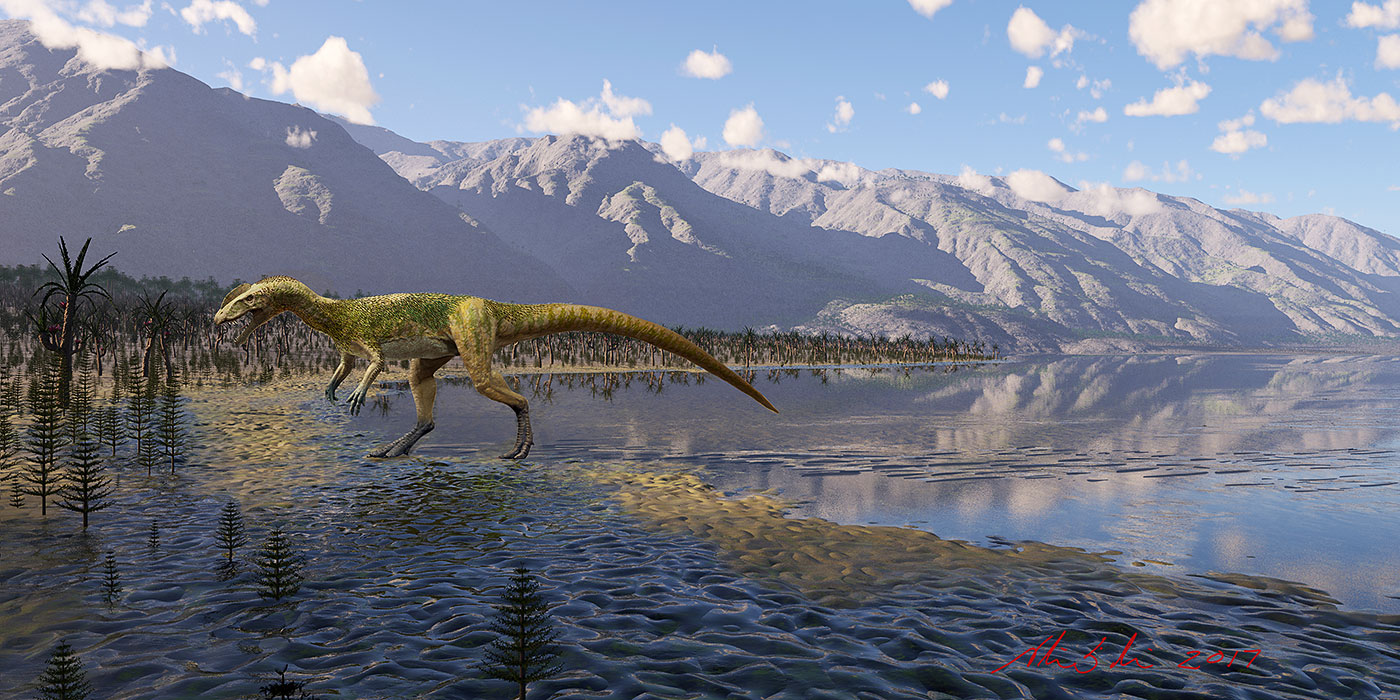
"Dilophosaurus with Proto-feathers", 2017, digital illustration; Image courtesy of William Sillin.

"Dilophosaurus with Proto-feathers", 2017, digital illustration; Image courtesy of William Sillin.
A Dilophosaurus, an early theropod (beast footed), walks across a muddy strip after its fishing trip in a Jurassic lake. The view is looking southwest along the lake margin, with the Eastern Border Fault escarpment towering above.
This Dilophosaurus is shown with the palms of its hands opposing each other, suggesting that they would be useful for grasping prey. This differs from the 1981 interpretation of Dilophosaurus at Dinosaur State Park, in Rocky Hill, Connecticut, where the hands dangle from the wrists.
In response to increasing evidence for feathered dinosaurs, though none yet for Dilophosaurus, we show the Dilophosaurus two ways: In the Intro to this slideshow, the Dilophosaurus is featherless. Here, we show the same one with feathers. Since full feathering evolved over time, this dinosaur is shown with only rudimentary coverage. Feathers are modified scales. They first appear on developing chicks as barbs or spikes. This Dilophosaurus is shown with elongated modified scales. Our Dilophosaurus feathers have a rachis (central shaft or stem) but no vanes (the curved, flattened surface of fine barbs that we usually think of as feathers). This structure may have been the precursor to true feathers seen on birds today. The elongated scales might have helped protect the skin, moderate body temperature, and serve as courtship display with their hint of iridescent color.
The flora assemblage, with the possible exception of Equisetites (horsetails), is composed of plants that are all extinct. Equisetites are closest to the lake. Nearby are the Bennettitaleans (with cycad-like fronds), here represented by a conjectural reconstruction called Williamsonia, a tree found in the Jurassic and Cretaceous periods. Further upslope, just visible, are the crowns of Cheirolepidiaceae conifers (evergreens). Other than Equisetites, all the plants shown are gymnosperms, meaning that they propagate through seeds that develop directly on leaves or fronds.